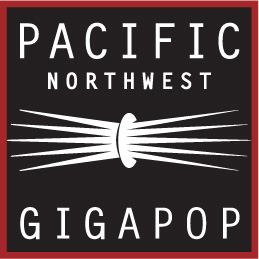ResearchTV & Sony Electronics Inc. Reach Convergence Milestone in Success of High Definition Television Over Internet Demonstration
SEATTLE, WASHINGTON - October 10, 1999
Efforts at the University of Washington (UW) to send studio-quality High Definition Television (HDTV) over the Internet paid off on September 9, when computer engineers and television experts celebrated their first successful demonstration of HDTV video transmission over the Internet2 network.
Working in support of ResearchTV, a consortium of leading research institutions creating greater access to research information, engineers from UW and the Pacific Northwest Gigapop teamed with colleagues at Sony Electronics and Stanford University to demonstrate the first-ever streaming of High Definition Television (HDTV) using only Internet transport technologies, rather than ATM networks or dedicated circuits.
The experimental transmission originated at the Stanford University campus in Palo Alto, and was carried across the new "Abilene" Internet2 backbone to the Pacific/NorthWest Gigapop in Seattle, which is the interconnection point for high-performance networks in the Northwest. From there the HDTV signals were delivered to the University of Washington campus network using Gigabit Ethernet technology. On October 12, this demonstration will be repeated at a meeting of Internet2 developers at the University of Washington.
"HDTV over the Internet brings us closer to a more perfect transfer of visual data," said Amy Philipson, executive director of the ResearchTV consortium, "Particularly in the case of the accessing vivid images that are important to the progress of research activity. This is one of the highest speed applications ever run over the Internet."
University of Washington and Sony developers were extremely pleased as they viewed the success of their work that culminated in a 40 minute stream of HDTV video sent from Stanford to the University of Washington at over 200 megabits/sec, which is more than ten times faster than 19.2 Mbps "consumer grade" HDTV streams. The demonstration used the highest quality industry standards with Sony HDCAM/HDVS equipment to capture, encode, and compress HDTV video. The success in the transfer of data is a result of original software written by UW programmers that handled error correction and encapsulated the data into packets which were transferred across Internet2 and reassembled as HDTV video in Seattle. This is a significant achievement as currently most television broadcasts on the commercial Internet are constrained to 20 to 200 kilobits per second using short clips of video shown in small windows on PC screens.
"The challenge of these demonstrations is to be able to sustain a continuous stream of high definition video with perfect HD picture quality over Internet2," said Michael Wellings, ResearchTV chief engineer at the University of Washington, "The demanding data streams required by high definition video have significantly tested the performance characteristics of Internet2 and pushed the boundaries of HDTV video distribution over the Internet. With these tests we have seen the future and we know that with more work this quality can be something everyone will be able to enjoy."
